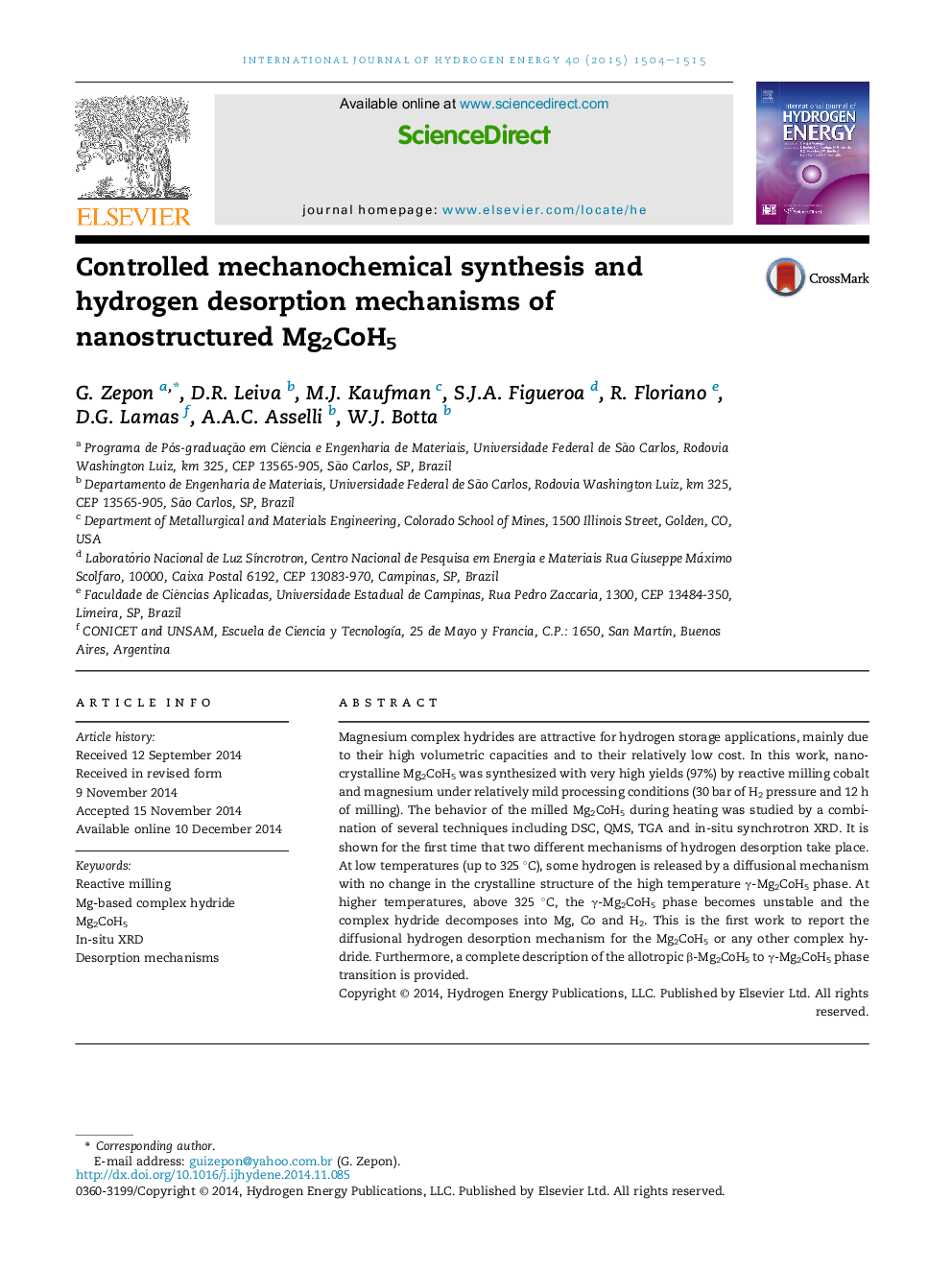| Article ID | Journal | Published Year | Pages | File Type |
|---|---|---|---|---|
| 1270136 | International Journal of Hydrogen Energy | 2015 | 12 Pages |
•Nanocrystalline Mg2CoH5 was synthesized with very high yield by RM from the elements.•Complementary techniques were used to study the behavior of the hydride during heating.•For the first time two different H-desorption mechanisms is proposed.•The influence of the H-desorption mechanisms in the desorption kinetics is presented.•A detailed description about the Mg2CoH5 allotropic transition is presented.
Magnesium complex hydrides are attractive for hydrogen storage applications, mainly due to their high volumetric capacities and to their relatively low cost. In this work, nanocrystalline Mg2CoH5 was synthesized with very high yields (97%) by reactive milling cobalt and magnesium under relatively mild processing conditions (30 bar of H2 pressure and 12 h of milling). The behavior of the milled Mg2CoH5 during heating was studied by a combination of several techniques including DSC, QMS, TGA and in-situ synchrotron XRD. It is shown for the first time that two different mechanisms of hydrogen desorption take place. At low temperatures (up to 325 °C), some hydrogen is released by a diffusional mechanism with no change in the crystalline structure of the high temperature γ-Mg2CoH5 phase. At higher temperatures, above 325 °C, the γ-Mg2CoH5 phase becomes unstable and the complex hydride decomposes into Mg, Co and H2. This is the first work to report the diffusional hydrogen desorption mechanism for the Mg2CoH5 or any other complex hydride. Furthermore, a complete description of the allotropic β-Mg2CoH5 to γ-Mg2CoH5 phase transition is provided.
